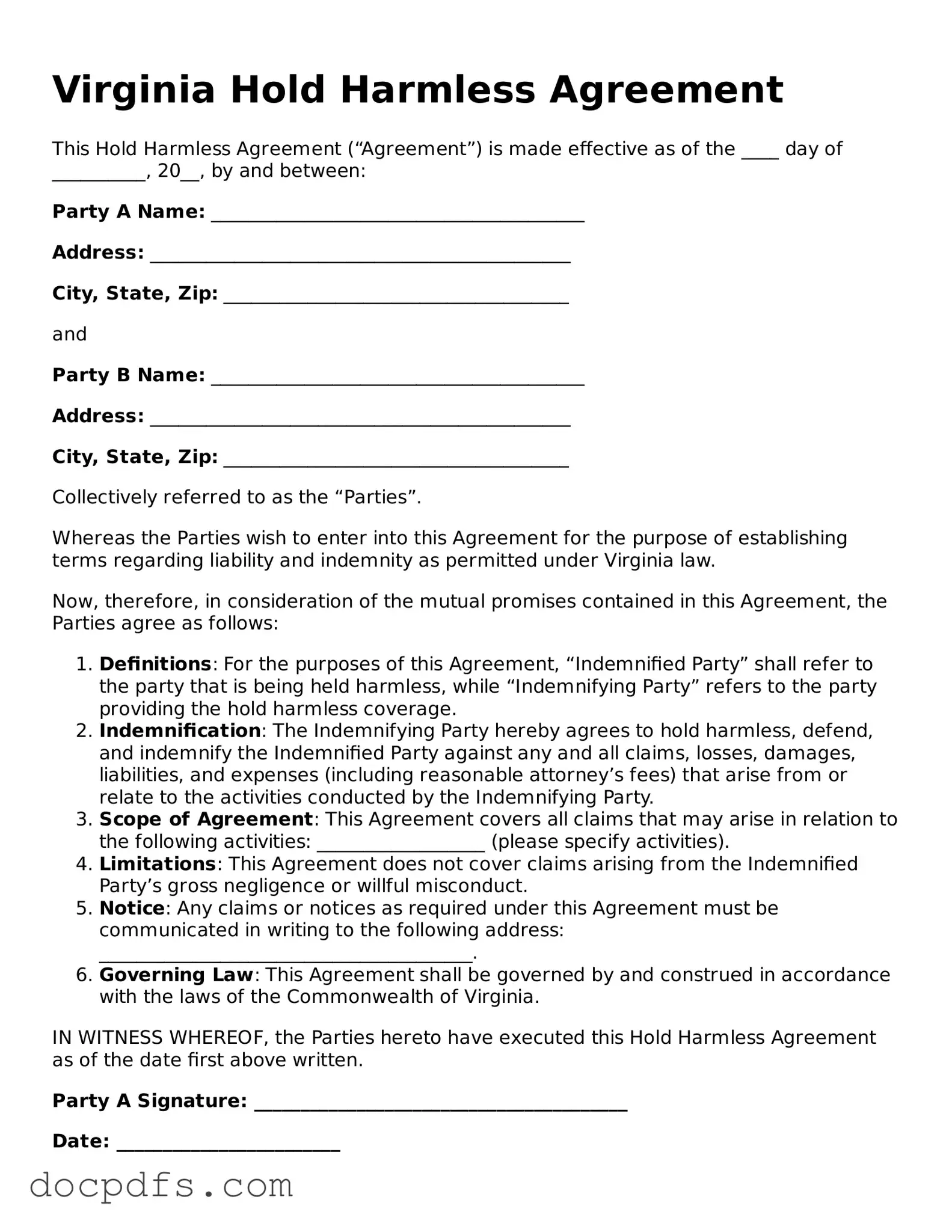Free Virginia Hold Harmless Agreement Form
The Virginia Hold Harmless Agreement is a legal document designed to protect one party from liability for any damages or injuries that may occur during a specific activity or event. This agreement ensures that the other party assumes responsibility for any risks involved. Understanding its importance can help individuals and organizations navigate potential legal challenges effectively.
Open Hold Harmless Agreement Editor Now
